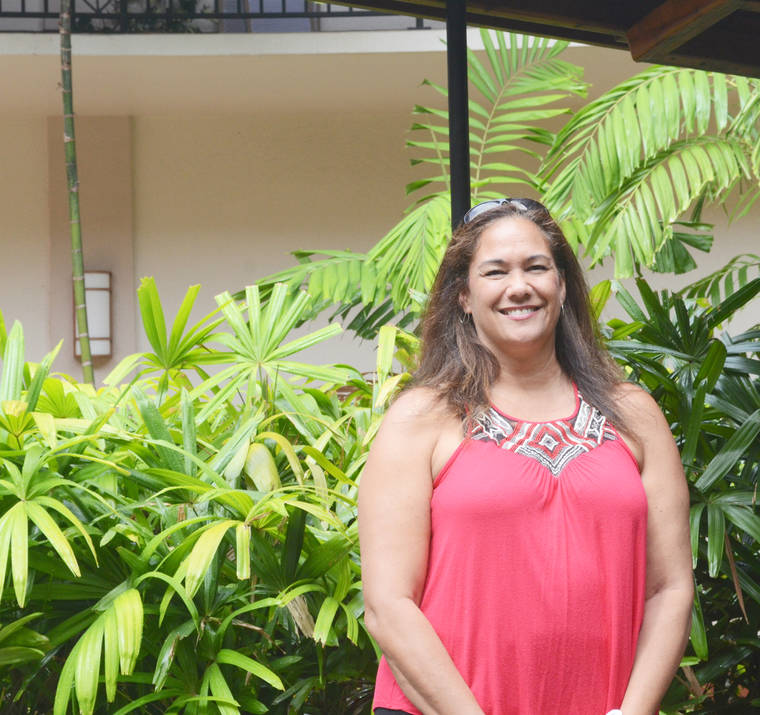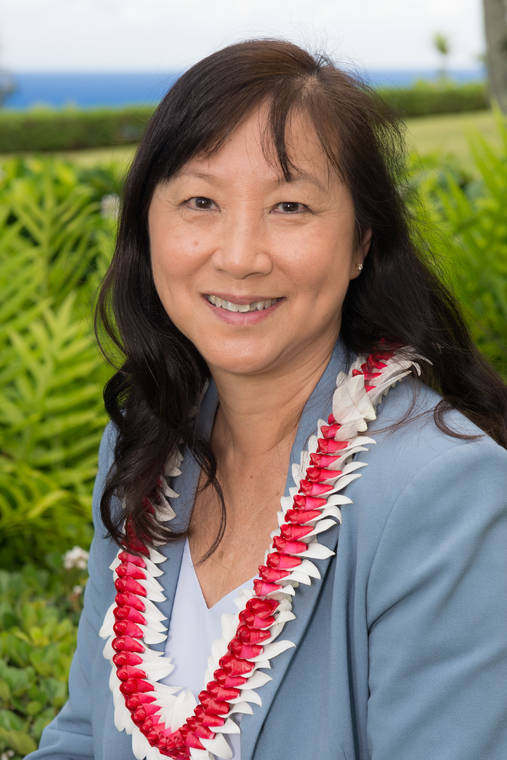LIHUE — Visitors average about 28,000 a day on Kauai, according to statistics from the state Department of Business, Economic Development and Tourism.
That’s one of the factors that the Kauai Tourism Strategic Plan 2019-2021 is taking into account as voluntary members of the community work together in an attempt to mitigate “overtourism.”
“It’s really about managing tourism,” said Denise Wardlow, general manager of The Westin Princeville Ocean Resort Villas, who is playing a vital role in the plan. “It’s ensuring that we’re doing the right thing for the community and the natural resources.”
An update of the first year of implementation of the plan, which is entitled “Refocusing Tourism to Find Balance,” was presented at Wednesday’s County Council meeting. One of the most notable points addressed during the discussion is that while the focus of the plan pertains to visitor capacity, it does not address resident growth.
“Everybody thinks it’s all rental cars on the island,” said Sue Kanoho, executive director of the Kauai Visitors Bureau, who also plays a primary role in the plan.
But that’s not actually the case, according to statistics.
Between 1990 and 2018, the number of people who call Kauai home increased by more than 20,000, according to reports from the DBEDT.
Moreover, the average number of visitors actually arriving on Kauai has remained relatively steady from 1990 to 2018, albeit following events like Hurricane Iniki. Last year, Kauai had about 1.38 million visitor arrivals, which is the highest recorded number, but that’s only slightly higher than some 1.23 million in 1990 or around 1.2 million in 2006, according to the DBEDT.
The difference is that the average daily census of visitors is higher due to additional units available today, including “repeat inventory,” such as condos, timeshares and transient vacation rentals (TVRs), resulting in a longer length of stay, Kanoho said. The average daily number of visitors in 1990 was more than 17,000, and almost 21,000 in 2006, according to the DBEDT.
Curtailing illegal TVRs is one thing that the strategic plan addressed in its first year, whereby the team supported the county Planning Department’s efforts to identify and eliminate them.
Another item of concern discussed at the meeting is the effect that social media has had on Kauai. Sharing photos of babies posed next to Hawaiian monk seals is just one example that causes “great concern,” Kanoho said. And members working on the plan continue to find ways to address the complex issue.
Due to recent complaints, the group also contacted Airbnb “experiences” in an attempt to address concerns over the posting of illegal business pursuits, such as conducting commercial activities in state parks without the proper permits, Kanoho said.
Besides nipping illegal activities in the bud, another success story that was shared regarding implementation of the plan, thus far, is offering support to the Kauai North Shore Shuttle, which has been an important element in reducing traffic along Kuhio Highway from Princeville to Haena State Park.
“Which I’m happy to say, ‘Hallelujah,’” said Nalani Brun, program administrative officer for the county Office of Economic Development, who is also instrumental in the plan.
Additionally, volunteers worked with the state Department of Land and Natural Resources and the DBEDT in supporting the new Haena State Park Master Plan.
Vehicles are now largely accounted for at Ke‘e Beach, and there’s been an increase in fines as high as $400 for illegal parking along the highway, Kanoho said. Some kinks are still being worked out, however, as about 200 visitor vehicles are being turned away each day (kama‘aina don’t need reservations), she added. Still, the situation was deemed better than it was prior to April 2018’s devastating flood.
“I think what it was before was horrific,” Kanoho said.
The Kauai Tourism Strategic Plan 2019-2021 was developed by the County of Kauai, the Hawaii Lodging &Tourism Association on Kauai, and KVB, and kicked off in August 2018.
It relies on partnerships, as well as open feedback and communication between members and the community, and has input from about 70 volunteers from various industries within the private and public sectors. They work within committees that focus on strategies for sustainable tourism, traffic and transit, and natural and cultural environment.
The plan will continue for another two years, and conclude on June 30, 2021. Visit www.kauai.gov/tourism for more information, or to read the plan.
•••
Coco Zickos, county reporter, can be reached at 245-0424 or czickos@thegardenisland.com.







Anyone who thinks that it is not tourists crowding the island is not too bright. Compare the number of cars and people from just 5 years ago and you have an answer. Also, lots of new condos and luxury houses are being built. Maybe those are off island owners, but lots of them are rented out for big money in the meantime. These inept government pawns only know how to count da monies…..
On top of eliminating illegal rentals, we need to also phase out all the ones outside the VDAs that have been grandfathered in. One way would be that if the property is sold, the TVR permit is ended.
The reality of it all is that Hawaii is a highly favorable destination point for folks to visit and “see for themselves” throughout the entire planet—-and with modern technology and the means to do so, people can head hear by a variety of means (and even pay later, if their credit is good). So there needs to be BALANCE, MONITORING, and the consciousness and commitment of ALL (residents AND visitors) to be cognizant and firmly committed to protecting and preserving the finite resources of our precious environmental integrity of our aina. It cannot be taken for granted. It cannot be ignored. It cannot occur naturally. It is a duty…an obligation…a privilege…an honor…a steadfast and unrelenting TRUTH for ALL of us to maintain. Otherwise, we all become a part of the problem, and not a part of the solution!
Hmmm…so its “not actually the case…” is it? Grabbing my napkin, it takes almost 20 years to add 20K residents to Kauai…what about 1K per year roughly. And there about 20K visitors per DAY…so it COULDNT be visitor rental vehicles that exacerbates the traffic situation…must be the 1K new residents per year, huh? I think the KVB needs at the very least, a remedial math class, or at least back up their data by at least revealing their sources. Its not rocket science to figure out we are currently more dependent on tourism now, then we were dependent on pine and sugar 30 years ago. Same claptrap we have been hearing from KVB and HTA for many years now, with zero solutions…except that we are incorrect thinking its visitor rental vehicles that are a big traffic overload cause…Get stuck in the Kapaa crawl lately, Ms Kanoho?
it is my firm belief that transplants should not complain about tourists, ever. transplants are a part of them problem, not a solution.
28,000 visitors per day you say in Kauai! Check your data. THAT is for all of Hawaii!!!!!
“Between 1990 and 2018, the number of people who call Kauai home increased by more than 20,000, according to reports from the DBEDT. ”
YEAH TRY LIKE 60,000 MORE FOR THIS LITTLE ISLAND!!!! STOP THE BS AND JUST TELL THE TRUTH ALREADY.. THIS ISLAND IS OVER CROWDED…. GONE ARE THE DAYS THAT YOU COULD GO DOWN TO POLIHALE BEACH AND THE NEXT PERSON FROM YOU WOULD BE A WAYS AWAY..NOW ITS LIKE OPIHI ON A TINY ROCK
Yes, blame the island residents that operate vacation rentals, just a drop in the bucket compared to the hotels…Of course, the hotel profits go to off island corporations while the vacation rental proceeds remain on Kauai…
Tax Revenues and JOBS! Otherwise It’s Coconuts and Mango for Dinners!
Really….you can twist the numbers anyway you like but there are too many tourists and save the money for selling the Iskand…..it is over sold already